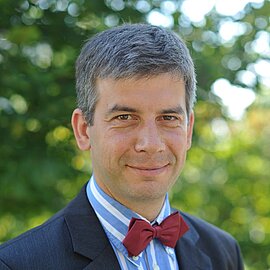Prof. Petrikov, you are analyzing the development of small farms in Russia at your institute. How exactly are the smaller farms set up, what is their size?
Small farms in Russia are represented by two major groups: commercial and non-commercial farms. Commercial small farms include small-size agricultural enterprises, peasant (family) farms and individual entrepreneurs with up to 100 employees and annual revenue of up to RUB 800 million. Additionally, commercial farms include a subgroup of micro-farms whose size, according to the law, should not exceed 15 employees and RUB 120 million of revenue per year. Non-commercial small farms include individual rural and urban households that cultivate their own household plots and non-profit associations of urban households (mainly associations of dachas and horticultural producers).
Based on the latest statistical census, there were 24,300 small enterprises in Russia in 2016 that accounted for 67.4% of the total number of agricultural enterprises in the country. At the same time, three quarters of small enterprises were represented by micro-enterprises. The average area of agricultural land of a small enterprise was 3,989 hectares, of which 2,864 hectares were arable land. The average annual number of employees at small enterprise was 15. Furthermore, there were 174,8 thousand of peasant (family) farms and individual entrepreneurs. The average size of their agricultural land amounted to 226 hectares (including 154 ha of arable land), while the annual number of employees was 2. There was a number of 23,4 million of non-commercial subsidiary household plots (including 8,4 in urban areas) with average size of 0,65 hectares of agricultural land (including 0,14 ha of arable land).
In which sectors do small farms play the most important role in the agriculture of Russia?
Russian small-size agricultural enterprises unlike large enterprises are mainly engaged in crop production mostly in potato and vegetable production. Peasant (family) farms, individual entrepreneurs and non-commercial households are mainly engaged in crop and milk production, horticulture, livestock, sheep and goat breeding. Over the last decade, the share of commercial small farms in the structure of agricultural production has been increasing while the share of rural households has been shrinking. Also, there is a trend toward decrease of a number of commercial farms with their simultaneous growth in size and livestock. Meanwhile, the number of livestock owned by non-commercial rural and urban households as well as their share in all other sectors of agricultural production is continuously falling. However, non-commercial households still play a significant role in Russia's potato, vegetable, milk and wool production.
What are the most important challenges for the development of small farms in Russia today? Which major policy measures do you think need to be implemented to improve the competitiveness of small farms in Russia?
Currently, Russian small commercial farms have less access to subsidies and loans than larger farms and the state should provide more support to small farms in this regard. In particular, more attention should be paid to the programs of financial support of new farmers, building and reconstructing livestock family farms and providing aid loans to small farms. Also, it is important to develop vertical agricultural cooperation between small farms and processors, suppliers and service providers. At the moment, only 4% of peasant (family) farms and individual entrepreneurs are members of cooperatives. Additionally, the level of digitalization of small farms is still low. Assistance in introducing innovative technologies to small farms would allow them to become more competitive.
What is your institute doing to contribute to the development of small farms in Russia?
All-Russian Institute for Agrarian Problems and Informatics named after Nikonov (VIAPI) conducts research of small farm development and provides informational support to agricultural communities, associations and cooperatives. VIAPI's research focuses on the methods of statistical monitoring of small farm activities, government support of small farms as well as improvement of agricultural cooperation.
Thank you, Prof. Petrikov, for the interview. See you soon at the IAMO Forum in Halle!
IAMO Forum 2019: Interview with keynote speaker Aleksandr Petrikov (VIAPI)
This year's IAMO Forum is dedicated to smallholder farming. Farms measuring less than two hectares produce one-third of the world's food, they boost agricultural growth and strengthen rural areas. But a lack of junior staff and agricultral policy programmes, which tend to benefit medium-sized and large farms, present small farmers with major challenges. In the run-up to the Forum, IAMO conducted interviews with a number of keynote speakers and will publish the talks here in the coming weeks.

Contact

Prof. Dr. Thomas Herzfeld
Director of IAMO
Head of Department Agricultural Policy
Room: 117
Anna Feshchenko
Tel.: +49 345 2928-121
forum2019(at)iamo.de
www.iamo.de/forum/2019